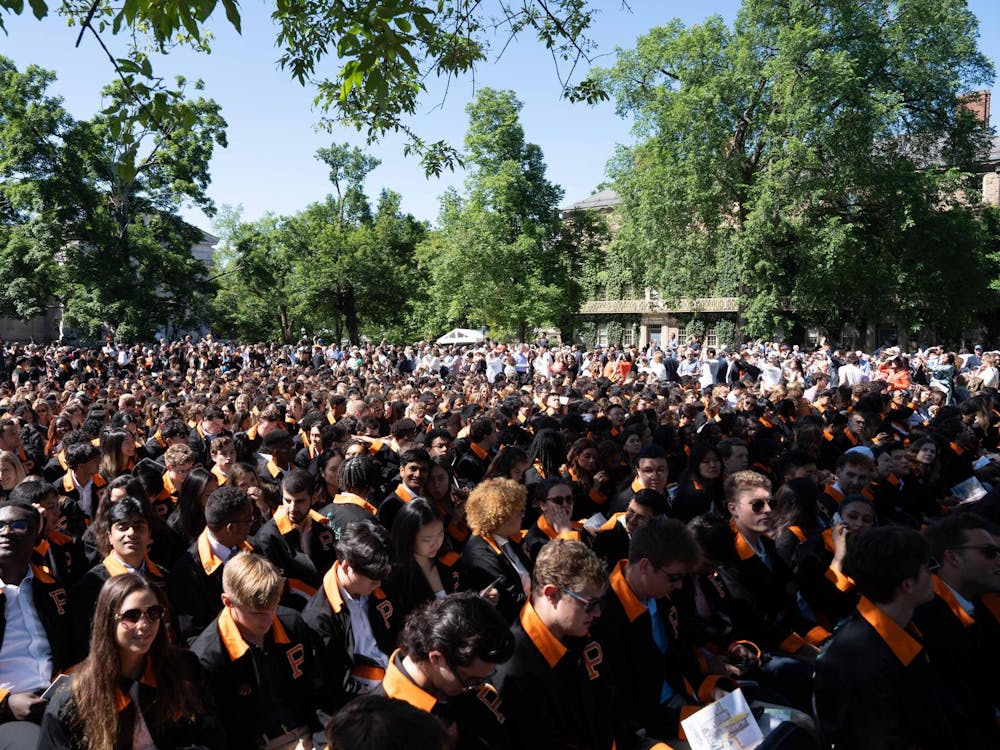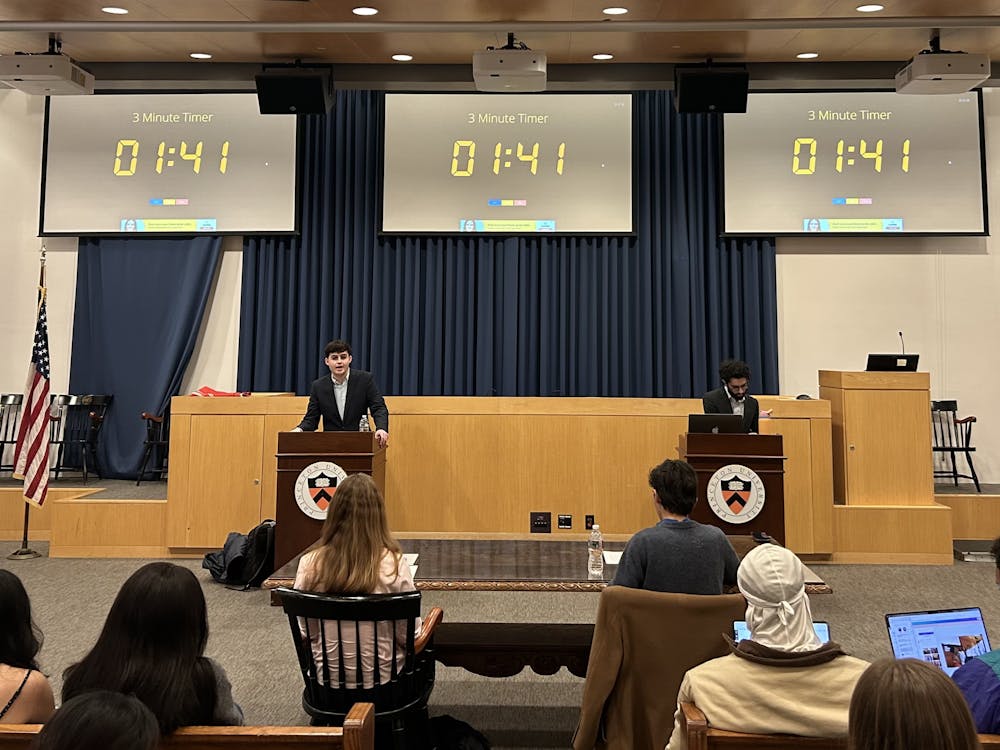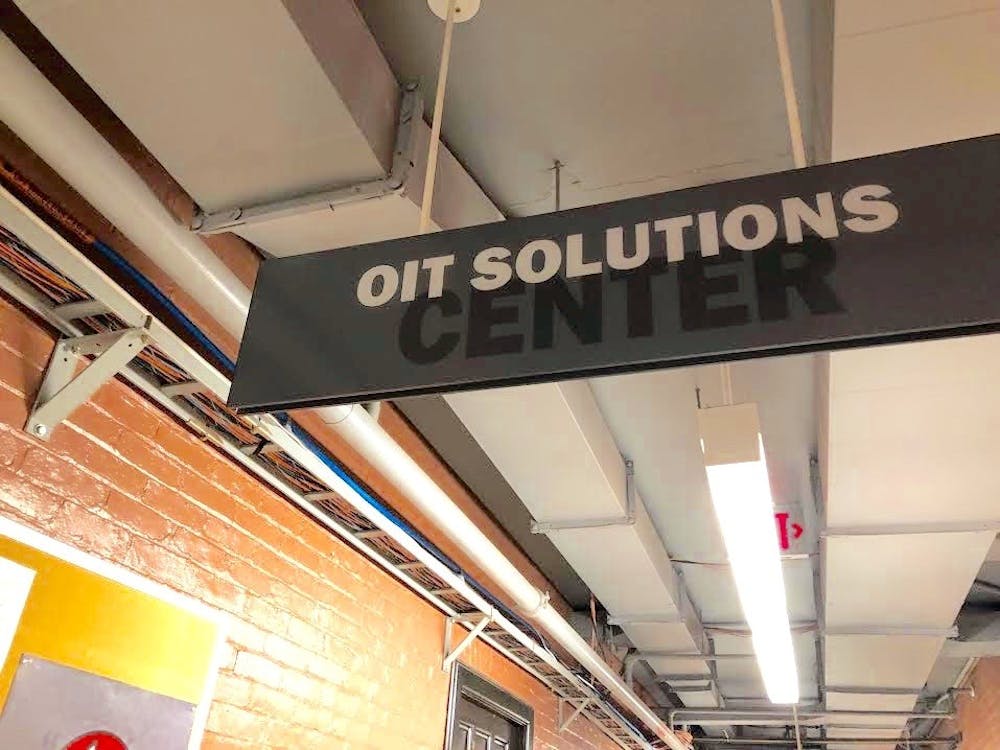A jazz band plays as crowds gather in the hall. People stand in a long line for the coat check. The chefs arrange hors d'oeuvres on buffet tables. It's Friday night at the Metropolitan Museum of Art, and people of all ages have come to look at art, socialize and enjoy themselves — activities which do not necessarily function independently of one other.
More and more museums are staying open late on Fridays and Saturdays in an effort to become a viable social event. The idea is that instead of going to the bar after work, you go get a drink at the museum. Then you visit the galleries and begin to discover some of the beauty and appeal of art. Judging from the crowds both in the lobby and in the galleries on the Friday I visited the Metropolitan Museum, this approach is succeeding. (Note: the Princeton University Art Museum also sponsors occasional "Jazz Nights," during which you can grab a bite to eat and wander the intimate collections while listening to music, all for free).
In contrast to such artistic events, a concert at the New York Philharmonic has a stuffy environment and an audience mainly from an older generation. The absence of young concertgoers poses a serious problem: what will happen to classical music in 30 years?
Of course, just because visual art and classical music both belong to the wider notion of "The Arts" does not mean that they can, or should, share similar expectations for the size and age of audience. Museums, to point out one of many differences, offer the attendee the opportunity to see, at his leisure, various works and styles. A student of the Renaissance can spend a whole day in front of one painting, while an over-active tourist can move through the whole period in 10 minutes. The very nature of live music, on the other hand, forces orchestras to provide their own interpretation of specific pieces in a fixed amount of time. The museum naturally attracts a larger and more diverse audience.
The New York Philharmonic, though, could learn a few techniques from the Metropolitan Museum for attracting some younger concertgoers. (I use the Metropolitan Museum and the Philharmonic as a starting point, but I think that the principles apply to other musical organizations as well).
First, make concerts more affordable for students. The student admission price for the Metropolitan Museum is $5; a decent seat at the Philharmonic costs $60. The Philharmonic does have a Student Rush Ticket program which sells tickets for only $10, but you need only read the description of the program on their internet site to realize how little they care about attracting students: "A limited number of $10 tickets may be available to students . . . on the day of the performance . . . tickets are not available for all concerts and are never available for Friday matinees or Saturday evenings." Doesn't that sound inviting. The Philharmonic should make it possible for students to buy discounted tickets for all performances online (as the New York City Ballet does).
Second, and more applicable to other musical ensembles, the Philharmonic needs to create a more relaxed atmosphere. Concerts of classical music unfortunately convey a sense of stiff and elitist high-culture. Could they match the casual and festive mood of a Friday night trip to the Metropolitan Museum? For starters, get rid of those long black dresses and formal tuxedoes. They certainly don't help the musicians play (trust me, I know the discomfort of playing in a hot tuxedo while my instrument crushes the bow tie). The formal outfits only succeed in making classical music seem archaic, irrelevant and utterly divorced from popular conceptions of music. A change in the traditional dress code could make the classical music environment more relaxed and intimate. Also, more orchestras should adopt seating plans that place the audience closer to the musicians, sometimes even on the stage.
Museums are succeeding in attracting new and diverse audiences. Orchestras need to follow their lead and make the artistic environment more accessible on both financial and cultural levels. Until they work to create a more relaxed atmosphere and attract a younger audience, students will not begin the journey of enjoyment, appreciation and sponsorship of classical music. Nathan Arrington is an art and archaeology major from Westport, Conn. He can be reached at arington@princeton.edu.







